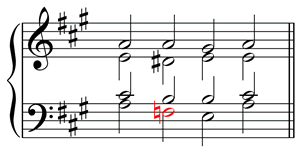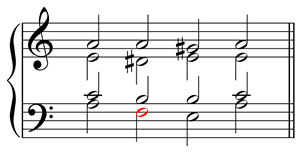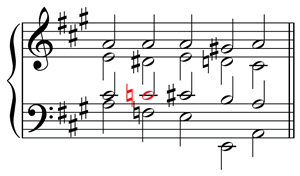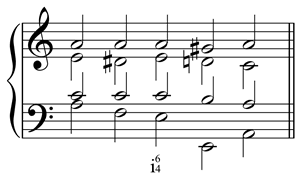Harmonic Functions : Augmented Sixths in Major Keys
The augmented sixth chord in a major key is the same chord as that of the parallel minor key. Here are the French augmented sixth chord of A major and A minor:


We must lower by half step the bass of the chord in major keys to obtain an augmented sixth interval. In the case of the German sixth chord (the example is in A major), we must also lower fifth from the bass:

Very often the German sixth is spelled enharmonically when resolving to the tonic chord in second inversion (D# - Eb in this case):

In this case, the chord receives several names: enharmonic German sixth, doubly augmented fourth sixth or Swiss sixth (as proposed by Walter Piston). Theoretically is a II degree seventh chord in second inversion.
